第99章 The Revival of Antiquity Introductory (49)
With Teofilo Folengo, or, as he here calls himself, Limerno Pitocco, the parody of the whole system of chivalry attained the end it had so long desired.But here comedy, with its realism, demanded of necessity a stricter delineation of character.Exposed to all the rough usage of the half-savage street-lads in a Roman country town, Sutri, the little Orlando grows up before our eyes into the hero, the priest-hater, and the disputant.The conventional world which had been recognized since the time of Pulci and had served as a framework for the epos, here falls to pieces.The origin and position of the paladins is openly ridiculed, as in the tournament of donkeys in the second book, where the knights appear with the most ludicrous armament.The poet utters his ironical regrets over the inexplicable faithlessness which seems implanted in the house of Gano of Mainz, over the toilsome acquisition of the sword Durindana, and so forth.Tradition, in fact, serves him only as a substratum for episodes, ludicrous fancies, allusions to events of the time (among which some, like the close of cap.vi.are exceedingly fine), and indecent jokes.Mixed with all this, a certain derision of Ariosto is unmistakable, and it was fortunate for the 'Or-lando Furioso' that the 'Orlandino,' with its Lutheran heresies, was soon put out of the way by the Inquisition.The parody is evident when (cap.vi, 28) the house of Gonzaga is deduced from the paladin Guidone, since the Colonna claimed Orlando, the Orsini Rinaldo, and the house of Este--according to Ariosto-- Ruggiero as their ancestors.Perhaps Ferrante Gonzaga, the patron of the poet, was a party to this sarcasm on the house of Este.
That in the 'Jerusalem Delivered' of Torquato Tasso the delineation of character is one of the chief tasks of the poet, proves only how far his mode of thought differed from that prevalent half a century before.
His admirable work is a true monument of the Counter-reformation which had meanwhile been accomplished, and of the spirit and tendency of that movement.
Biography and in the in the Middle Ages and in the Renaissance Outside the sphere of poetry also, the Italians were the first of all European nations who displayed any remarkable power and inclination accurately to describe man as shown in history, according to his inward and outward characteristics.
It is true that in the Middle Ages considerable attempts were made in the same direction; and the legends of the Church, as a kind of standing biographical task, must, to some extent, have kept alive the interest and the gift for such descriptions.In the annals of the monasteries and cathedrals, many of the churchmen, such as Meinwerk of Paderborn, Godehard of Hildesheim, and others, are brought vividly before our eyes; and descriptions exist of several of the German emperors, modelled after old authors--particularly Suetonius--which contain admirable features.Indeed these and other profane 'vitae' came in time to form a continuous counterpart to the sacred legends.Yet neither Einhard nor Wippo nor Radevicus can be named by the side of Joinville's picture of St.Louis, which certainly stands almost alone as the first complete spiritual portrait of a modern European nature.
Characters like St.Louis are rare at all times, and his was favored by the rare good fortune that a sincere and naive observer caught the spirit of all the events and actions of his life, and represented it admirably.From what scanty sources are we left to guess at the inward nature of Frederick II or of Philip the Fair.Much of what, till the close of the Middle Ages, passed for biography, is properly speaking nothing but contemporary narrative, written without any sense of what is individual in the subject of the memoir.
Among the Italians, on the contrary, the search for the characteristic features of remarkable men was a prevailing tendency; and this it is which separates them from the other western peoples, among whom the same thing happens but seldom, and in exceptional cases.This keen eye for individuality belongs only to those who have emerged from the halfconscious life of the race and become themselves individuals.
Under the influence of the prevailing conception of fame an art of comparative biography arose which no longer found it necessary, like Anastasius, Agnellus, and their successors, or like the biographers of the Venetian doges, to adhere to a dynastic or ecclesiastical succession.It felt itself free to describe a man if and because he was remarkable.It took as models.Suetonius, Nepos (the 'viri illustres'), and Plutarch,-so far as he was known and translated; for sketches of literary history, the lives of the grammarians, rhetoricians, and poets, known to us as the 'Appendices' to Suetonius, seem to have served as patterns, as well as the widely-read life of Virgil by Donatus.
It has already been mentioned that biographical collections --lives of famous men and famous women--began to appear in the fourteenth century.